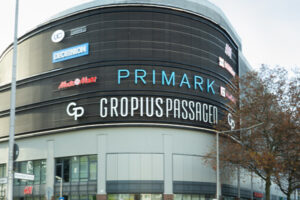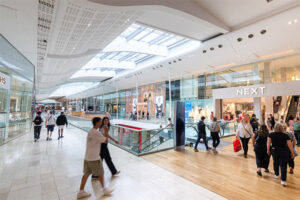Multi Corporation manages more than 80 retail assets across Europe, and it has set high marketing standards and criteria in its “Driving Value” program. The program also covers strategic marketing management. This approach assumes that the role of shopping center marketing is not “soft”, based on intuition, where the effects of this is often non-measurable, but must fulfill a “hard” and measurable business role. Therefore, in Multi, the marketing function has been strategically integrated with the revenue side of the business, embracing specialty leasing and short-term rental management.
“At Multi, on the pan-European level, we have always scrutinized methods of comparing the effectiveness of marketing projects, e.g., pro-sales campaigns, events or advertising campaigns, in our various facilities in Europe,” explains Adam Bajer. “Standardization of marketing management in our industry is not easy, because the marketing plan of one shopping center includes activities that are often difficult to compare with those carried out in other properties. However, the key is to evaluate them in terms of their impact on the value of the asset for the owner.”
Evidence-based Marketing Management
Nowadays, owners need marketing management in a way that helps maintain and enhance the market position of a shopping center like never before. The extent to which previously planned campaigns or current projects contributed to the increase in value in the long-term is assessed. It is crucial to identify historic and recent factors that influence this value. This is evidence-based marketing.
The benchmark of big data analyses from over 80 assets, as well as cyclical portfolio research has proven to be particularly useful. By comparing and analyzing data with financial results and costs, it is possible to diagnose a dozen or so marketing indicators on the path to increasing the value of the asset. They can be measured despite the market or the size of the property. Aided by these indicators, Multi plans strategies for the brands in the shopping centers it manages, annual communication plans, advertising campaigns, events, and promotions on the retail calendar.
Marketing Should be Involved in the Leasing of a Shopping Center
“An important role of marketing today is to respond to the challenge of how to physically increase the availability of properties: their visibility, car or pedestrian access, how to increase the convenience and shopping experience of customers, and take advantage of the growing trend for convenience formats,” says Adam Bajer. “Also, marketing of commercial real estate must be able to create an additional product offer, i.e., answer the question: how, in addition to the traditional lease, it is possible to further monetize the space of a commercial property and the thousands, or millions of customers visiting it, in front of all those eyeballs. This means a return to basics in the form of the 4P marketing-mix: product, place, promotion, price. In our opinion, the marketing of a shopping center should be much more often involved in developing the concept of leasing for a shopping center, developing e-commerce solutions, as well as shaping short-term and specialist rental offers.”
This is about providing consumers with the best possible combination of service offering and experience. Marketing activities and promotions conducted by Multi generate a visible, data-supported increase in the number of visitors, contribute to increasing the brand awareness of the facility, stimulating turnover, and thus, ensuring rental income.
For example, a Multi shopping mall marketing team in one of the Portuguese tourist cities introduced a free bus service to the airport and city center. To make tourists’ experience even better, the center also introduced an information system with flight schedules, delay notification, and allows passengers to print boarding passes for free. In one of Multi’s Turkish facilities, two withdrawn railway carriages were transformed into a 30-meter “Discount Train” set on a specially built track. Branded goods are offered here at discounted prices. Every month, the store attracts over 45,000 customers, and the annual AVE measured by the value of views in social media reaches the €185,000 level.
Engage with Visitors and Local Communities
Multi also works closely with tenants to ensure the best use of digital channels and social media. This helps engage visitors and make the managed venues an essential part of their local communities. To ensure that the high expectations of customers and tenants are met, Multi conducts pan-European satisfaction surveys among both groups. The collected feedback provides local marketing teams, and the entire international Multi team, with valuable information which directly informs the specific marketing events that they organize in the centers.
“We also stimulate an atmosphere of healthy competition between marketing teams from different countries and malls, regarding the most creative and successful marketing ideas,” adds Adam Bajer. For example: the Hungarian marketing team received an award for the Best Gift Card program implemented at Allee Center. It sold over 130,000 gift cards with an average value of €60. In turn, the marketing award went to colleagues from Turkey for the events they organized in four centers in that country.
This proactive, collaborative approach to marketing is important for property managers to assist tenants, as they quickly respond to changing consumer trends.






